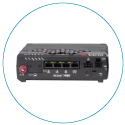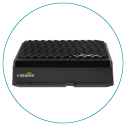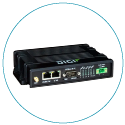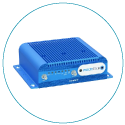How Edge Computing Enhances Sustainable Practices
Did you know data centers contribute 2% of the world's CO2 emissions? With increasing demand, their electricity consumption is projected to rise by 10% annually. The electronics industry accounts for an estimated 4% of greenhouse gas emissions. Implementing sustainable practices is crucial to mitigate these impacts across the tech sector. Organizations relying on electronic devices can play a significant role in this effort.
There are compelling incentives to adopt sustainable practices, including the fact that sustainable practices can lead to significant business cost savings. Companies with strong sustainability initiatives also tend to have more stable stock prices and achieve higher returns than their competitors. According to a Deloitte study, nearly 70% of companies would reject mergers or acquisitions due to inadequate Environmental, Social, Governance (ESG) strategies.
This is where edge computing comes into play. By storing and processing data on or near the device that created it, edge computing significantly reduces data transmission and CO2 emissions on a large scale. Edge computing offers immediate advantages by replacing power-intensive cloud systems across various use cases. It has even given rise to new sectors like precision agriculture, providing sustainable solutions that were previously unattainable. By optimizing energy consumption, reducing data transfer requirements, enhancing resource utilization, and enabling more efficient and responsive systems, edge computing stands out as a promising eco-friendly technology.
Ten Ways Edge Computing Can Support Sustainability
The core principle of edge computing is efficiency: sending less data, making decisions faster, and quickly adjusting or halting processes when issues arise in the field, on assembly lines, or in hazardous facilities where faults can cause significant damage. This efficiency also offers substantial benefits for sustainable operations.
Here are ten examples:
Reduced Power-Hogging Data Transfer and Bandwidth Consumption
By processing data locally—from thermostats and security cameras to automobiles and trains—edge computing minimizes power-hungry data transfers to the cloud. This conserves bandwidth and reduces network congestion. Edge computing can significantly support sustainable city initiatives across transportation, utilities, water/wastewater management, and smart buildings.
Lower Latency and Energy Consumption
Edge devices reduce the need for continuous data transmission and processing in the cloud, resulting in lower latency and quicker response times. These devices also consume less energy, with many battery-powered edge devices operating for years without needing a charge or refresh.
Energy-Efficient Devices and Infrastructure
The oil and gas industry provides an excellent example of energy-efficient edge computing. This industry relies on edge devices to manage operations across extensive pipeline networks. Using localized edge processing infrastructure in remote locations improves energy conservation and reduces dependence on power-intensive centralized data centers.
Optimized Resource Utilization
Edge computing architecture efficiently allocates computing resources by distributing processing tasks based on workload requirements. This reduces the load on centralized servers, freeing up bandwidth and lessening the workload on cloud servers.
Support for Renewable Energy Management
The rise of renewables-based electricity presents challenges for the energy grid, which must be designed to handle fluctuating power sources like wind and solar. Edge devices deployed at renewable energy sites help grid operators predict energy supply, demand, and fluctuations, creating more stable and reliable grids.
Smart Building and Energy Management
Smart buildings generate vast amounts of data daily. Edge computing processes this data in real-time at or near the device, streamlining energy usage and enabling responsive control of critical systems such as lighting, heating, and cooling.
Efficient Industrial Processes
As industrial operations focus on reducing carbon footprints, edge computing helps by processing sensor data locally, reducing energy consumption, and enabling efficient, real-time monitoring.
Precision Agriculture
Edge computing has revolutionized precision agriculture by connecting devices like driverless tractors, GPS systems, and soil and water sensors. This technology ensures precise application of water, fertilizers, and pesticides, reducing waste and minimizing environmental impact.
E-Waste Reduction
Edge computing, combined with computer vision and AI, can detect defective parts in manufacturing processes, reducing scrap materials and e-waste. Additionally, waste management vehicles using sensor technology and fleet monitoring can optimize routing for efficiency, as demonstrated in Digi's case study with Metro Compactor.
Sustainable Transportation
Transportation is the U.S.'s largest contributor to greenhouse gas emissions, accounting for about 28% of total emissions. Edge computing can help reduce these emissions by optimizing traffic management systems. For example, edge sensors on traffic lights and roadways can analyze real-time traffic patterns and adjust signal timing to reduce congestion, minimizing vehicle idling and fuel consumption.
Remote Management Platforms
A remote management platform like Digi Remote Manager® is crucial in the edge computing ecosystem. It allows organizations to manage edge devices remotely and streamline device and network management. This centralized platform ensures accessibility, insights, and notifications from anywhere via desktop or mobile devices.
About MCA and Our CNS Team
MCA is one of the largest and most trusted integrators in the United States, offering world-class voice, data, and security solutions that enhance the quality, safety, and productivity of customers, operations, and lives. More than 65,000 customers trust MCA to provide carefully researched solutions for a safe, secure, and more efficient workplace.
Our Cellular Networking Solutions (CNS) team (formerly known as USAT) is made up of certified experts in designing and deploying fixed and mobile wireless data connectivity solutions for public and private enterprises nationwide - complete with implementation, training, proof of concept (POC), system auditing, and on-site RF surveying services with optional engineering maintenance contracts.
Our extensive Digi International catalog of world-class routers, gateways, and software designed for remote monitoring and management in even the harshest environments allows us to deliver a full suite of reliable technologies capped with a service-first approach.
Share this Post













